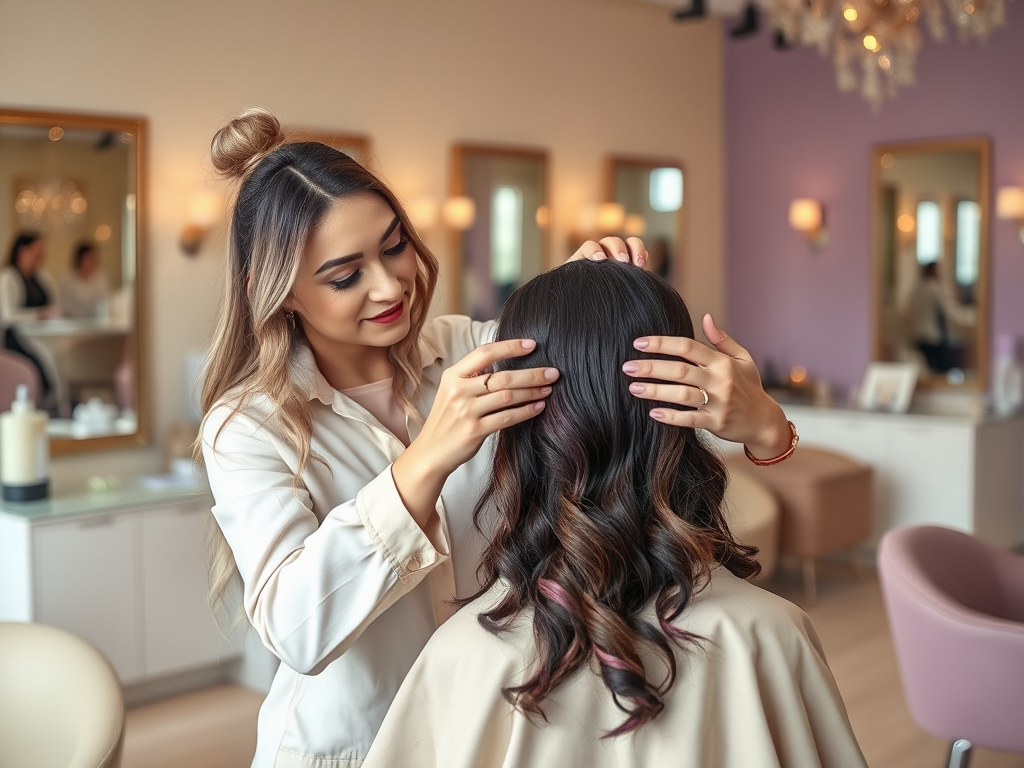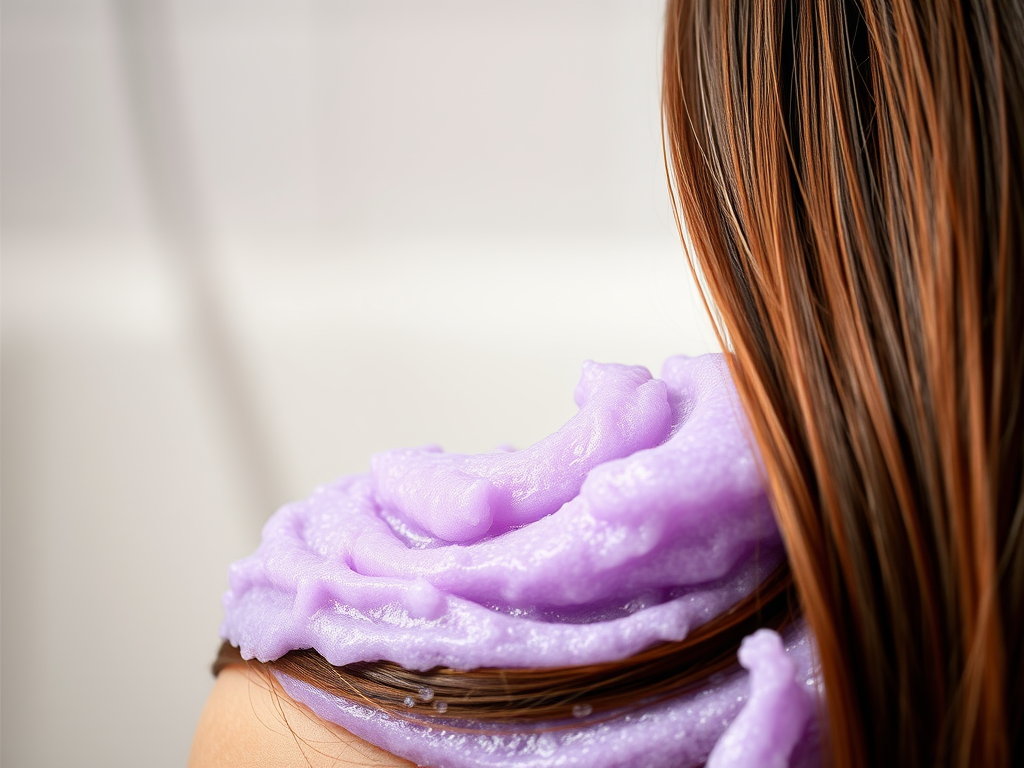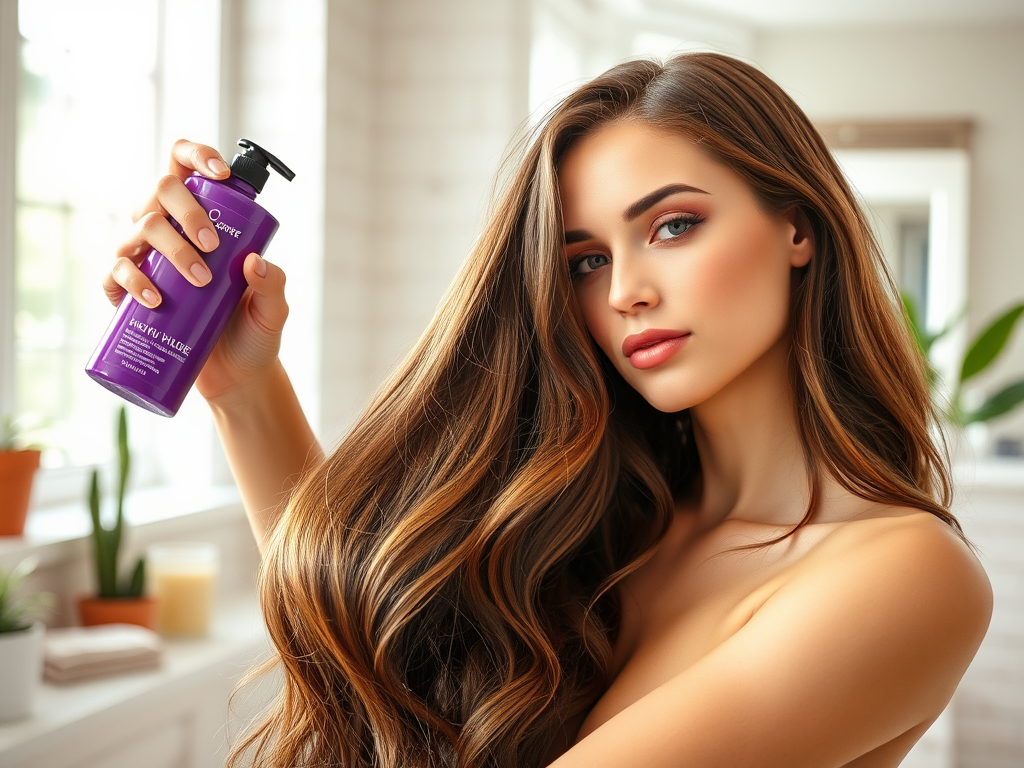If you’re rocking brown hair and looking for ways to keep those unwanted brassy tones at bay, you may have come across the terms “purple toner” and “purple shampoo.” Both products promise to enhance your color, but they differ in their formulations and applications. As the beauty industry evolves, so do the products that claim to cater to our hair’s needs, making it crucial to understand how each works. In this article, we’ll dissect the differences between purple toner and purple shampoo, examining each product’s benefits, potential downsides, and the ideal scenarios for their application. With this knowledge in hand, you can make an informed decision about which product—or if both—will best serve your hair care routine.
The journey toward achieving the perfect shade of brown hair is not always straightforward. It’s not just about coloring; maintaining that color can be just as complex. Over time, brown hair can take on unwanted yellow or brassy tones, leaving it looking dull. The application of a purple product can counter this effect, ensuring your hair remains vibrant between salon visits. The question looms: should you reach for that purple toner, or will purple shampoo suffice? Each product has its unique advantages and uses, and understanding these will enable you to tailor your hair care to meet your specific needs.
Understanding Purple Products

What Are Purple Toner and Purple Shampoo?
Purple toner is a semi-permanent hair color that neutralizes unwanted warm tones in brown hair. It’s typically used following a dye job to adjust and maintain the desired shade. In contrast, purple shampoo is a cleansing product infused with purple pigments. It is designed for regular use to help maintain your hair color by counteracting brassiness during your wash routine. While both products share a common goal—maintaining rich, vibrant hair color—they differ significantly in their formulation and application method.
The Science Behind Purple Pigments
At the core of both purple toner and shampoo lies the color wheel principle. Purple pigments are opposite yellow on the color wheel, meaning that they neutralize warm tones commonly found in dyed hair. When applied, these pigments bond to your hair strands, effectively canceling out any brassiness present in your hair color. Understanding this science is crucial for anyone looking to enhance their brown hair, as it lays down the foundation for the effectiveness of these products. Whether you’re committed to achieving the perfect ash brown or maintaining a warm chestnut hue, knowing how these colors interact is vital.
Benefits of Purple Toner for Brown Hair

Purple toners provide several benefits for those with brown hair, particularly vibrant shades. Unlike standard shampoos, toners are formulated to deliver long-lasting results. They can effectively adjust the hue of your hair, shifting it from brassy yellows to more muted or ashy tones. This adaptability makes purple toner an essential element in maintaining the integrity of your shade, particularly post-coloring treatments. Applying toner can not only restore richness but also improve overall hair health by locking in moisture.
- Long-lasting color correction.
- Customization of shade and tone.
- Strengthens and maintains hair health.
Benefits of Purple Shampoo for Brown Hair
Purple shampoo offers a level of convenience that toners can’t provide. Designed for regular use, this product fits seamlessly into most hair care routines. It is easy to apply during a regular wash, providing immediate results with continued use. Many users appreciate how purple shampoo enhances vibrancy, especially in between salon visits. Regular use can mean the difference between dull hair and a bright, polished look.
Considerations for application frequency differ significantly between purple shampoo and toner. The table below summarizes some key aspects of each product:
| Aspect | Purple Toner | Purple Shampoo |
|---|---|---|
| Application Frequency | Every 4-6 weeks | 1-2 times per week |
| Processing Time | 5-30 minutes | During regular wash |
| Results | Lasting color correction | Immediate tonal adjustment |
Potential Downsides of Each Product
Purple Toner: Risks and Considerations
As beneficial as purple toner can be, it isn’t without its risks. Misapplication or over-toning may result in unwanted shades, such as a lavender tint. This can be particularly concerning for those who’ve experienced the adverse effects of overuse. Additionally, while toners are effective in boosting color, they may not deliver the desired result if the hair is severely damaged. Therefore, it’s essential to understand your hair’s condition before leaning heavily on toners.
Purple Shampoo: Drawbacks and Limitations
On the other hand, purple shampoos, while convenient, may also have drawbacks. Frequent use might lead to dryness in the hair over time, particularly if it’s already processed or compromised. Notably, if overused, some users may find their hair becomes dull as a result of the product buildup. It’s essential to balance your hair care routine to avoid such issues while still reaping the benefits of these purple products.
Ideal Scenarios for Using Purple Toner and Shampoo
The choice between toner and shampoo often hinges on your specific hair needs and goals. Consider using toner if you’re fresh from a dye treatment and need serious color correction. Meanwhile, if your goal is to maintain your shade regularly, incorporating purple shampoo into your routine can save you time. Here are some scenarios that may help clarify when to use each:
- Choose purple toner if you want:
- Long-lasting color adjustments.
- To combat significant brassiness post-coloring.
- A more intensive care treatment for your color.
- Opt for purple shampoo if you need:
- Convenience and ease during washes.
- Regular maintenance of your hair color.
- An instant refresh in between salon visits.
Conclusion
Choosing between purple toner and purple shampoo for brown hair ultimately depends on your hair’s specific needs and how you prefer to care for it. While toner can offer more targeted and long-lasting adjustments, purple shampoo provides convenience and ease of use that fits perfectly into a regular washing routine. Understanding the benefits and potential downsides of each product is essential for making an informed decision. Whether you opt for the intensive care of a toner or the daily upkeep of a shampoo, both can play crucial roles in minimizing brassiness and enhancing your beautiful brown locks.
Frequently Asked Questions
- What is the primary difference between purple toner and purple shampoo? Purple toner is a color treatment that helps adjust the hue of your hair, while purple shampoo is a cleansing product that helps maintain color and reduce brassiness.
- Can I use both purple toner and purple shampoo together? Yes, they can be used together for optimal results, but it’s crucial to monitor the frequency to avoid over-toning.
- How often should I use purple shampoo on brown hair? Typically, 1-2 times a week is recommended, but this can vary based on your hair’s condition and shade.
- Will purple toner damage my hair? If used correctly and not over-applied, purple toners should not damage hair. However, always perform a patch test to avoid adverse reactions.
- Can purple products work on all shades of brown hair? Yes, purple products can work effectively on all shades of brown hair, though results may vary depending on the specific tone and underlying pigments.
